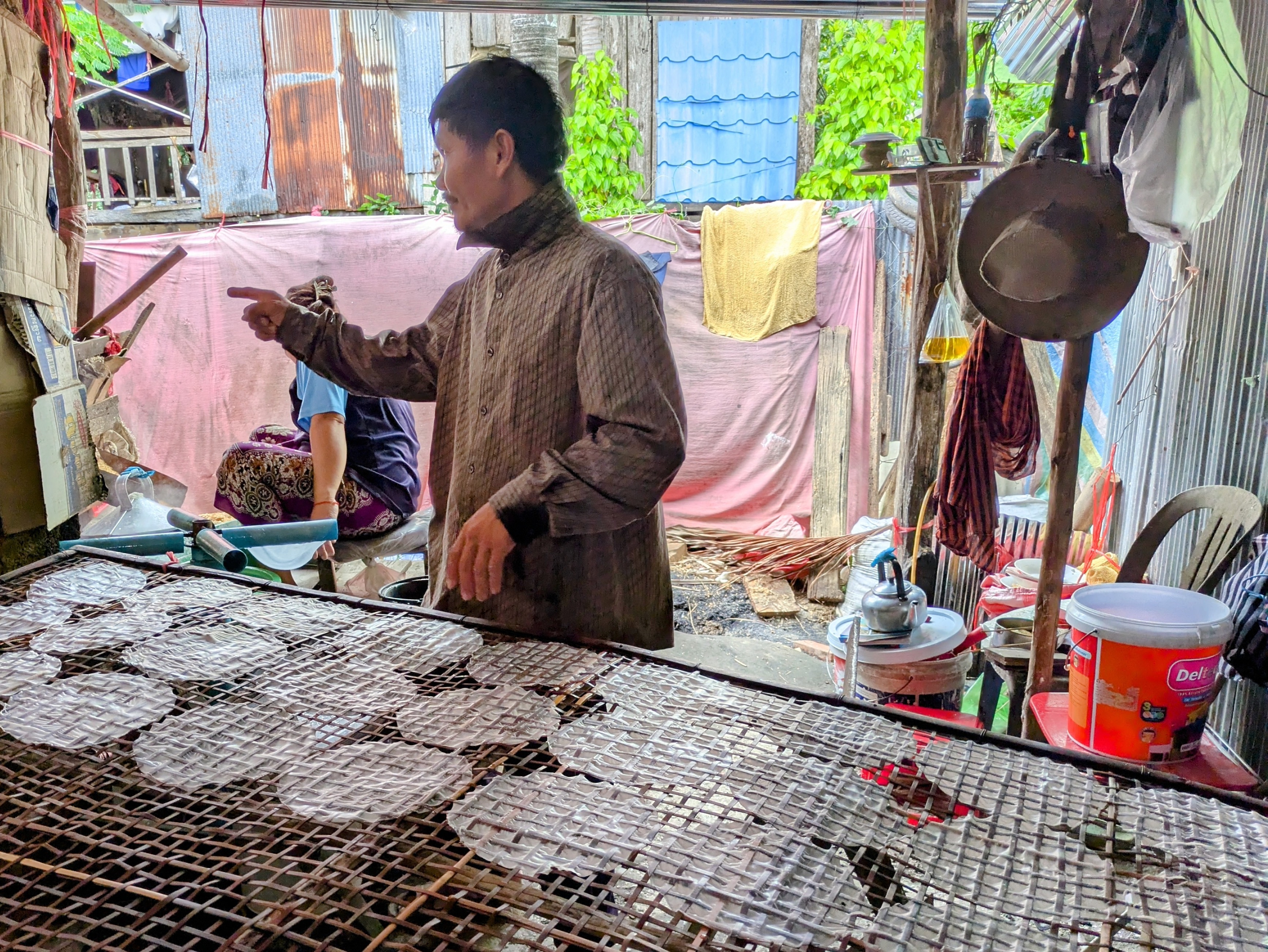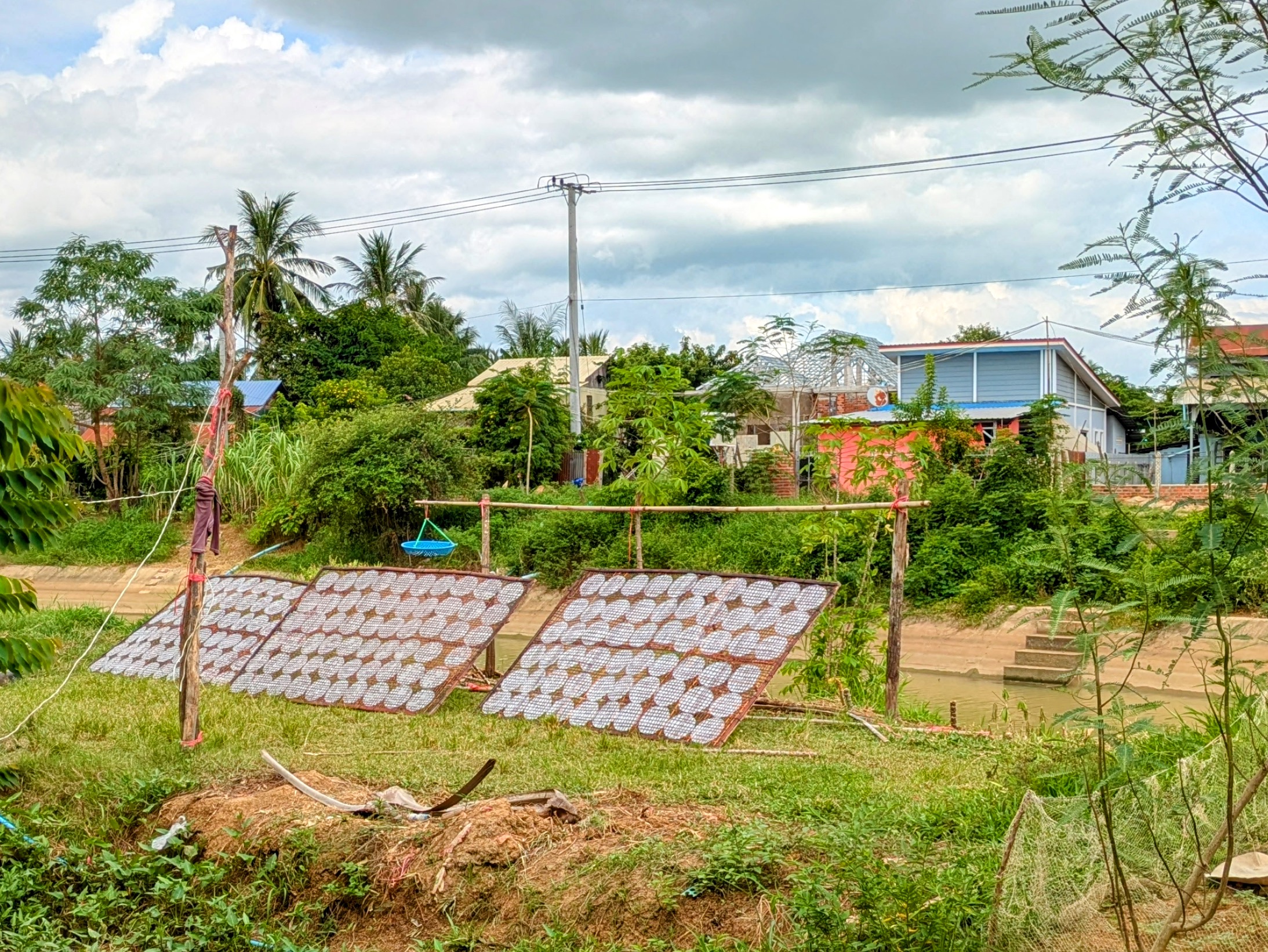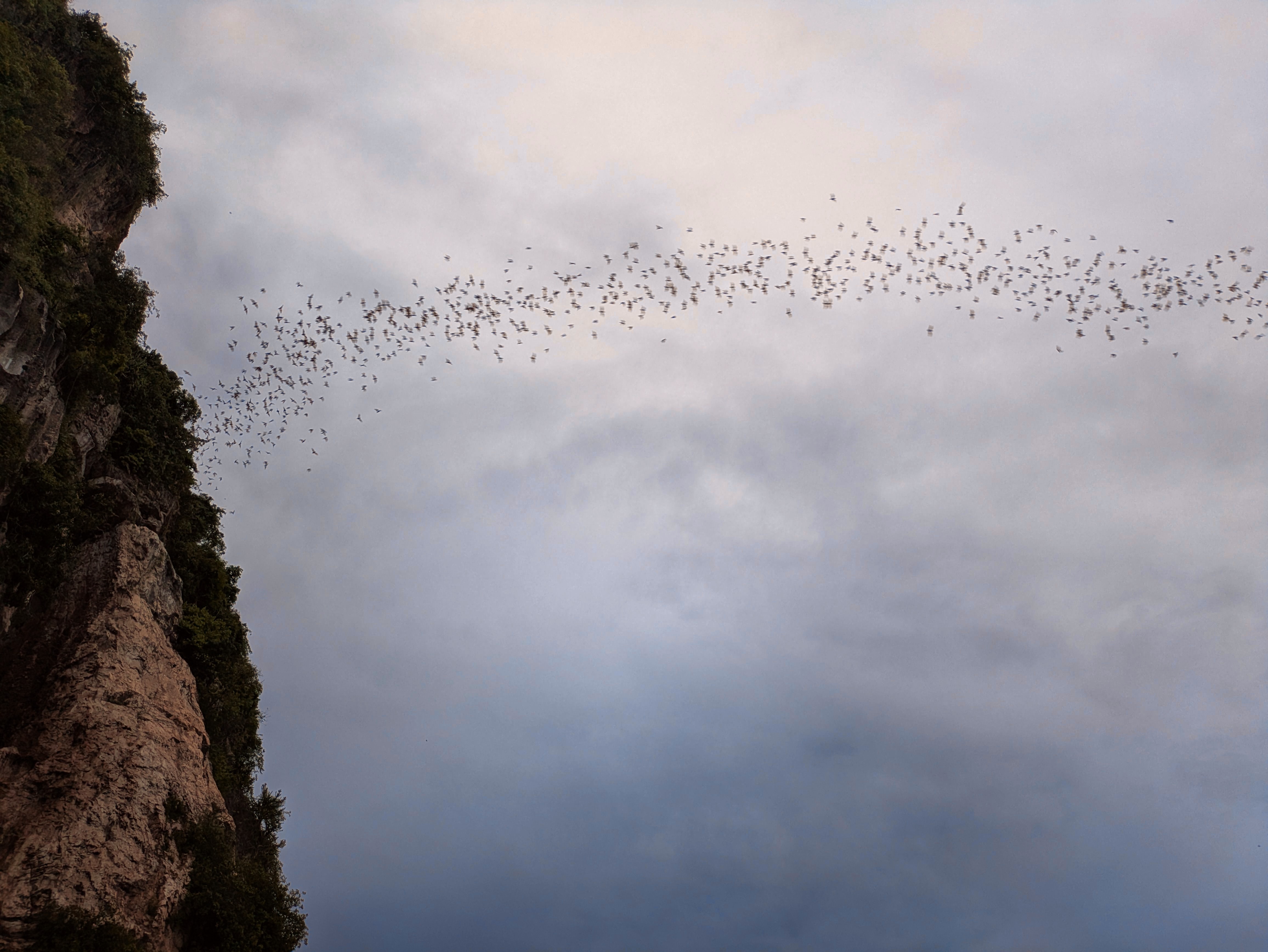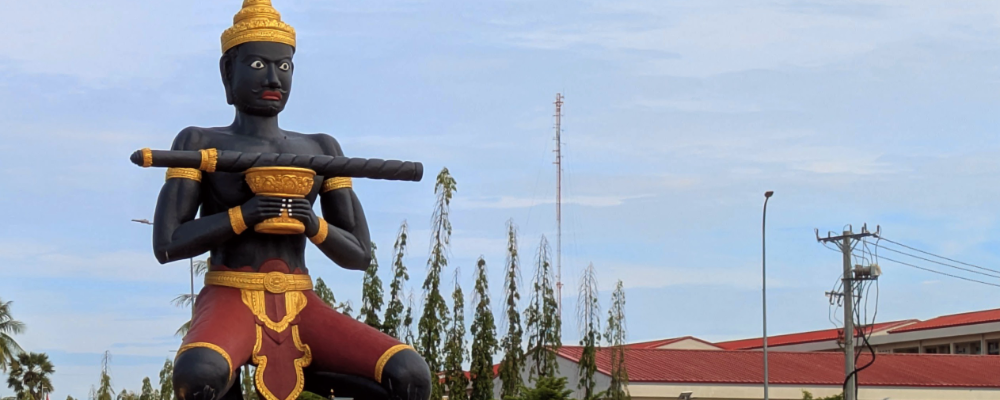In Battambang’s central square stands a statue of Ta Dambong, a figure whose legend captures something I’ve been wrestling with this year. The story goes that he was a peasant who rose to become a protector of his people, wielding a magical stick to defeat the king and rule the land. But power corrupted him, and he began using that same stick to oppress those he he saw as a potential threat. Eventually, he threw his magical stick at the king’s son, who came to confront him. It missed, and he lost it forever. Powerless, he left and never returned. The name Battambang literally means “The Lost Stick.”
What strikes me isn’t just the story itself, but that people still come to this statue to pray for blessings. They ask for protection from the same figure whose tale includes both salvation and tyranny. They hold the entire story — the good and the corruption — without needing to choose sides or simplify the narrative.
Standing before that statue, I realized I was asking the same questions here that I ask at home: How do we reconcile the capacity for both profound kindness and unimaginable cruelty that exists within any society? How do we move forward when the same communities, the same human nature, contains such contradictions?
That day, Arn Chorn-Pond had taken us through his hometown, sharing stories that made these questions feel urgent rather than abstract. He showed me the school where he was playing soccer as a child when the Khmer Rouge entered town, beginning to terrorize the population from the moment they arrived. His family’s old home now sits behind the walls of a Cambodian People’s Party compound. In just five years — not much longer than a single presidential term — the Khmer Rouge killed one out of every four citizens in this country. The devastation still echoes through generations.
Yet the day before, Arn had spotted something that made him tell our tuk-tuk driver to stop. We were passing through a neighborhood near the river when he noticed a family making spring roll wrappers the traditional way. Without hesitation, he approached their home, spoke with them briefly, then beckoned us to follow. This clearly wasn’t a wealthy family, but they welcomed complete strangers into their workspace with genuine warmth. I watched as they carefully spread rice batter onto cloth, creating perfect translucent circles, then placed each wrapper into metal grid holders to dry by the river. They were so generous with their time, showing their process, and letting me photograph their work.
The kindness was immediate and unconditional. In a place where such unspeakable violence had occurred within living memory, strangers opened their home to foreigners simply because someone asked.


How do you hold both realities? The same human capacity that enables such generosity also enabled such cruelty. The same communities that create beauty and art and maintain traditions of hospitality also contained those who participated in genocide. These aren’t different people in different places. This is the full spectrum of what humans are capable of, existing side by side.
One evening, we waited at Phnom Sampov as dusk approached, watching millions of bats emerge from the sacred cave for their nightly flight. The spectacle was breathtaking.

The next day, we visited Phare Ponleu Selpak, an arts school that began in refugee camps, using art to help children process trauma they had witnessed. We arrived to witness a blessing ceremony for their new dance studio, and the music, dancing, and proceedings were profound. The students moved with precision and grace, their performance honoring both tradition and innovation. The school continues to respond to their community’s needs, training young artists while providing social services and education.
Watching those dancers, I thought about reconciliation not as forgetting or forgiving, but as the complex work of moving forward while holding the full truth. The Ta Dambong statue represents this perfectly. People pray to a figure whose story includes corruption because they understand that complexity is part of the human condition, not an exception to it.
The students at Phare aren’t trying to erase history or pretend trauma doesn’t exist. They’re using art to transform it, to create something beautiful from something terrible while never forgetting what happened. They’re building a future that acknowledges the past without being defined by it.
This is the work of reconciliation everywhere — learning to hold contradictions without requiring simple answers, finding ways to move forward without forgetting, creating beauty while acknowledging darkness. Standing in that square in Battambang, I realized that the questions I brought with me are the same ones communities everywhere must face. The answers, when they come, emerge not from choosing sides but from the harder work of holding the whole story.
